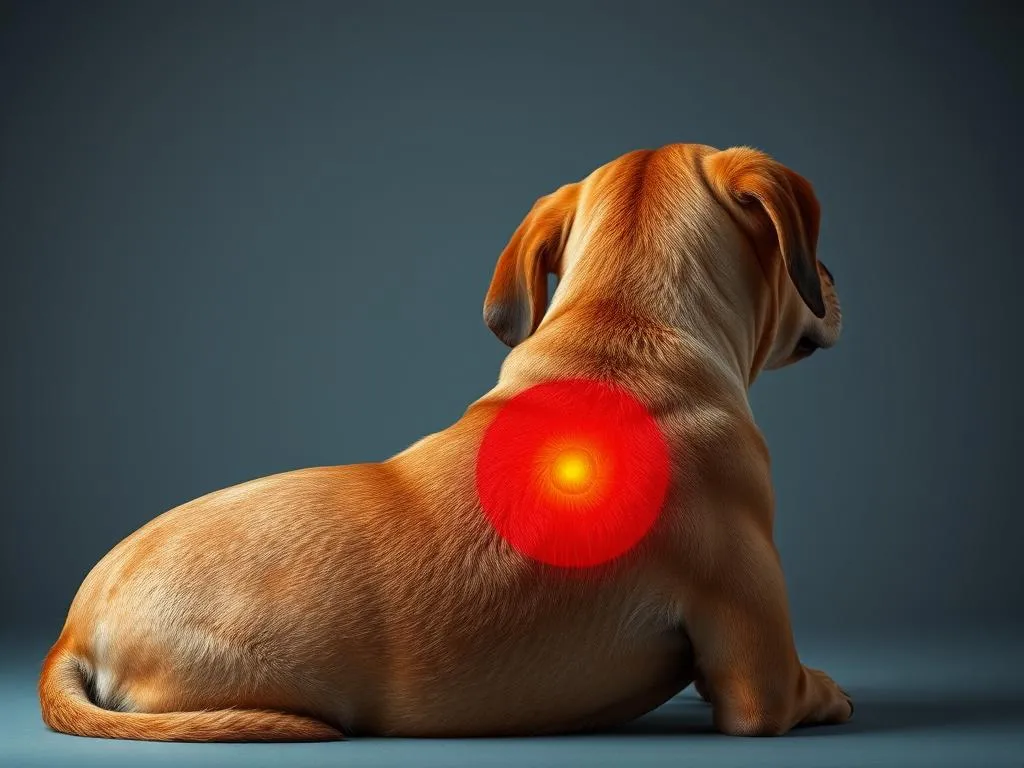
Introduction
Back pain in dogs is a condition that can affect dogs of all ages and breeds. It is characterized by discomfort or pain in the spinal region, which can manifest through various physical and behavioral changes. Recognizing the signs of back pain is crucial for dog owners, as untreated pain can lead to further complications, reduced quality of life, and long-term health issues for your furry friend.
In this article, we will explore the causes, symptoms, diagnosis, treatment options, and preventive measures related to back pain in dogs. By understanding these aspects, you can ensure your dog remains healthy and happy.
Understanding Back Pain in Dogs
Common Causes of Back Pain
Understanding the root causes of back pain in dogs is essential for effective management and treatment. Here are some common causes:
Injuries and Trauma
Injuries, such as falls or accidents, can lead to acute back pain. Dogs that engage in high-energy activities like jumping or running might be more susceptible to back injuries.
Degenerative Conditions
Degenerative conditions, such as intervertebral disc disease (IVDD), are prevalent in certain breeds. IVDD occurs when the cushioning discs between the vertebrae deteriorate or bulge, causing pain and discomfort.
Inflammatory Diseases
Conditions such as meningitis or spondylitis can cause inflammation in the spinal area, leading to significant pain. These diseases may arise from infections or autoimmune responses.
Obesity and Poor Conditioning
Excess weight puts additional strain on a dog’s back, making obesity a significant risk factor for back pain in dogs. Furthermore, dogs that lack regular exercise may have weakened muscles, which can contribute to back issues.
Breed-Specific Risks
Certain breeds are more predisposed to back problems, including:
- Dachshunds: Known for their long backs, they are particularly susceptible to IVDD.
- Bulldogs: Their unique conformation can lead to spinal issues.
- Corgis: Similar to Dachshunds, their structure makes them prone to back pain.
Understanding these breed-specific risks can help owners take proactive steps to protect their dogs.
Symptoms of Back Pain in Dogs
Recognizing the symptoms of back pain in dogs is crucial for early intervention. Here are some common signs to watch for:
Physical Signs
Dogs in pain may exhibit various physical changes, including:
- Changes in Posture: A dog may adopt a hunched posture or hold its head low.
- Difficulty Walking or Jumping: Hesitation or reluctance to engage in activities they once enjoyed may indicate pain.
- Reluctance to Play or Exercise: A noticeable decrease in playful behavior could signal discomfort.
Behavioral Changes
Alongside physical signs, behavioral changes can also indicate back pain in dogs:
- Increased Irritability or Aggression: Pain can lead to an increase in aggressive behavior, particularly when touched in sensitive areas.
- Changes in Sleeping Habits: A dog may have trouble finding a comfortable position, leading to disrupted sleep patterns.
When to Seek Veterinary Help
If you notice any of the above symptoms or if your dog displays sudden changes in behavior, it may be time to consult a veterinarian. Signs that warrant immediate attention include:
- Persistent crying or whining
- Inability to stand or walk
- Loss of appetite
Diagnosing Back Pain in Dogs
Accurate diagnosis is crucial for effective treatment of back pain in dogs.
Veterinary Examination
A thorough veterinary examination typically begins with a physical assessment. The veterinarian will check for pain response when pressure is applied to the back and observe the dog’s overall mobility.
Diagnostic Tests
To pinpoint the cause of back pain, your veterinarian may recommend various diagnostic tests, including:
- X-rays: Useful for identifying bone-related issues.
- MRIs or CT scans: These imaging techniques provide detailed views of soft tissues and can identify disc issues or other spinal problems.
- Blood tests: To rule out infections or underlying health issues.
Importance of Accurate Diagnosis
Misdiagnosis can lead to improper treatment and prolonged suffering for your dog. Therefore, it’s essential to follow through with the suggested diagnostic tests for a clear understanding of your dog’s condition.
Treatment Options for Back Pain in Dogs
Once diagnosed, various treatment options are available for managing back pain in dogs.
Medications
Effective pain management often starts with medications:
Pain Relief Medications
Non-steroidal anti-inflammatory drugs (NSAIDs) are commonly prescribed to relieve pain and inflammation. These medications can significantly improve your dog’s comfort.
Corticosteroids
In more severe cases, corticosteroids may be recommended to reduce inflammation. However, these should be used cautiously due to potential side effects, including increased thirst and urination.
Physical Therapy
Physical therapy can play a vital role in rehabilitation:
- Therapeutic Exercises: Tailored exercises can strengthen back muscles and improve flexibility.
- Hydrotherapy: This low-impact exercise is beneficial for dogs recovering from injuries or surgery.
Surgery
In severe cases where conservative treatments fail, surgical intervention may be necessary. Surgical options might include:
- Discectomy: Removal of the affected disc.
- Spinal fusion: Stabilizing the spine in severe cases of instability.
Alternative Treatments
Many dog owners explore alternative treatments for back pain in dogs:
- Acupuncture: This ancient practice can help alleviate pain and improve mobility.
- Chiropractic Care: Adjustments may relieve discomfort and improve spinal alignment.
- Herbal Remedies and Supplements: Some natural products claim to reduce inflammation and support joint health.
Preventive Measures for Back Pain in Dogs
Prevention is always better than cure. Here are some strategies to help minimize the risk of back pain in dogs:
Weight Management
Maintaining a healthy weight is crucial. Obesity significantly increases the risk of back problems, so ensure your dog follows a balanced diet and regular feeding schedule.
Regular Exercise
Regular exercise is important for overall health. Aim for moderate exercise tailored to your dog’s breed and age. Activities like walking, swimming, or gentle play can strengthen back muscles and improve flexibility.
Safe Play Practices
To prevent injuries during play:
- Supervise play sessions, especially with other dogs.
- Avoid roughhousing that could lead to falls or jumps.
Proper Training Techniques
Training your dog to avoid jumping or engaging in rough play can significantly reduce the risk of back injuries. Positive reinforcement techniques are effective in instilling good habits.
Home Care and Management
Managing back pain in dogs at home is essential for recovery and comfort.
Creating a Comfortable Environment
Ensure your dog has a supportive bed that promotes spinal alignment. A safe space where your dog can rest without disturbances is also important for recovery.
Monitoring Recovery
Keep an eye on your dog’s behavior and mobility. Note any changes, improvements, or regressions, and communicate these observations with your veterinarian during follow-up visits.
Routine Check-Ups
Regular veterinary visits are crucial for early detection and prevention of back issues. Keeping up with vaccinations and health checks can help catch potential problems before they escalate.
Conclusion
In summary, back pain in dogs is a significant concern that requires attention from dog owners. Understanding the causes, recognizing the symptoms, and seeking appropriate treatment can lead to better outcomes for your furry companions. By being proactive about your dog’s health and implementing preventive measures, you can significantly enhance their quality of life.
FAQs
Can back pain in dogs be cured?
In many cases, back pain in dogs can be managed effectively with proper treatment, though some chronic conditions may require ongoing care.
How long does it take for a dog to recover from back pain?
Recovery time varies depending on the underlying cause and treatment plan. Minor injuries may heal within weeks, while more severe conditions could take months to improve. Always consult your veterinarian for a more accurate timeline tailored to your dog’s specific situation.









